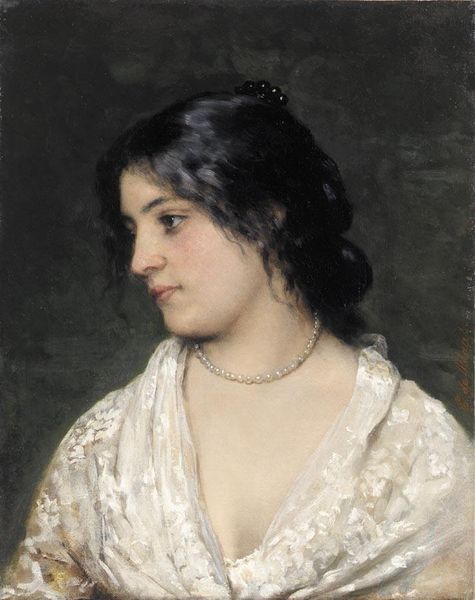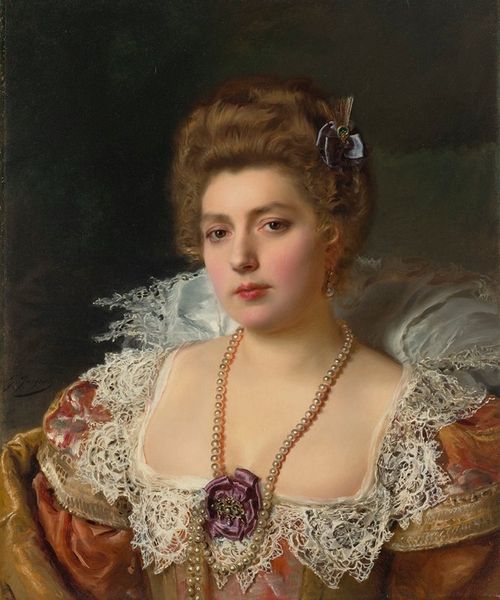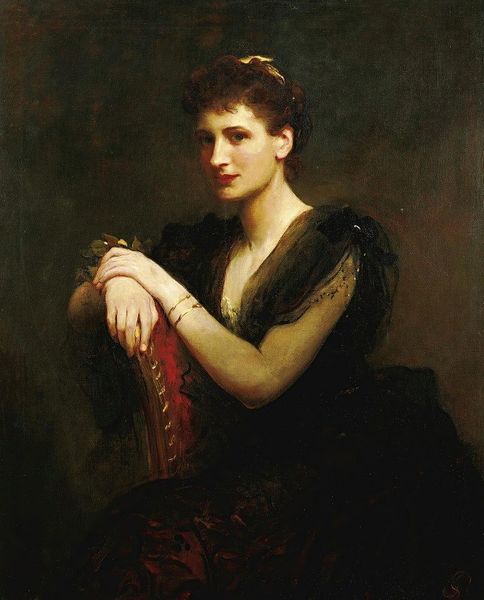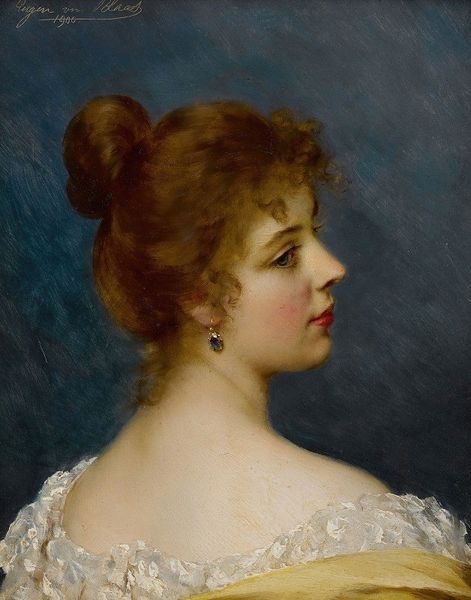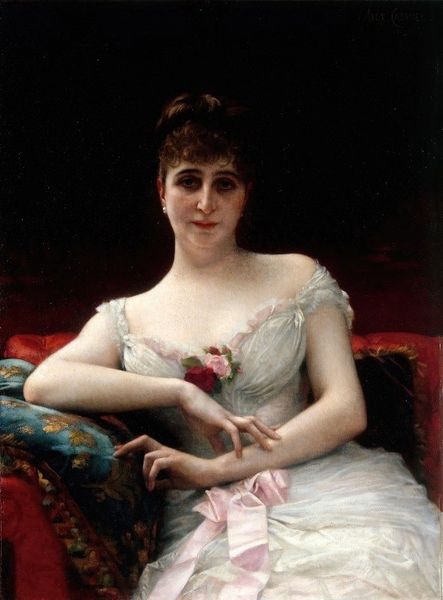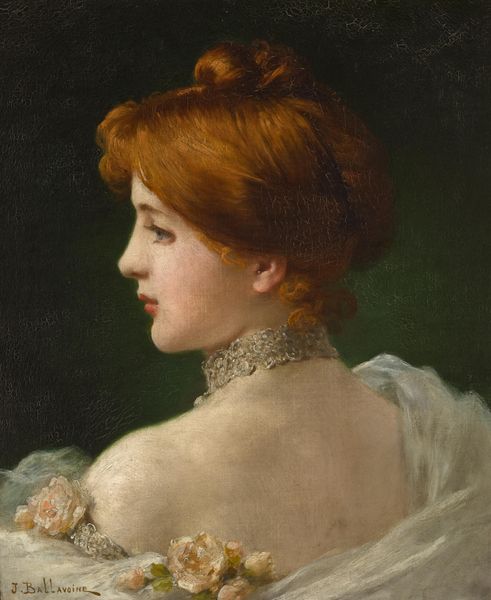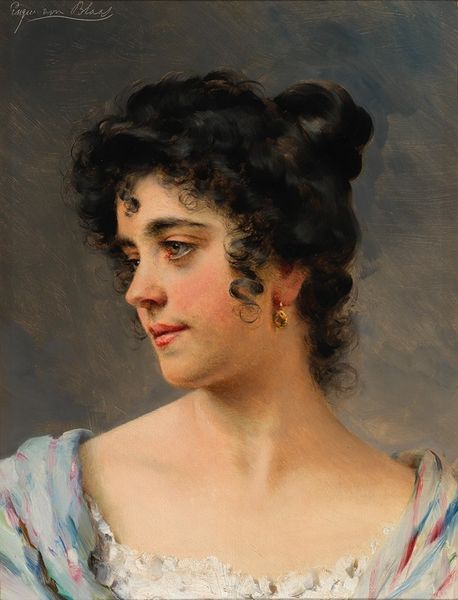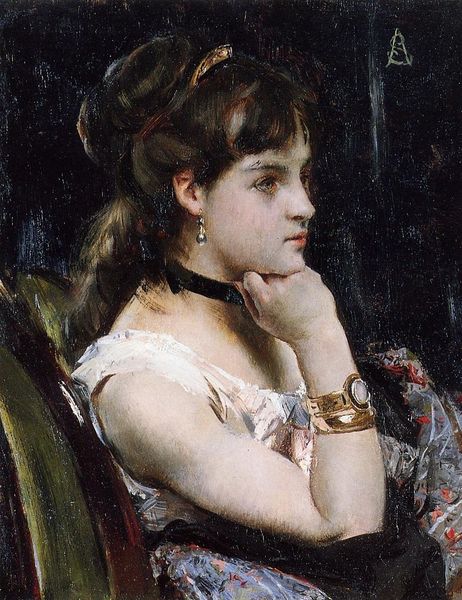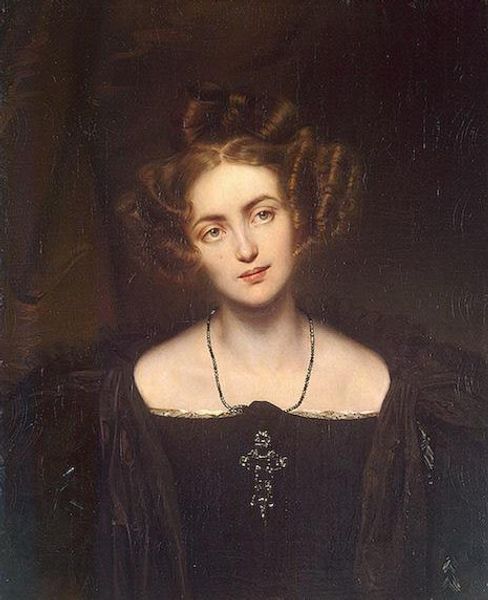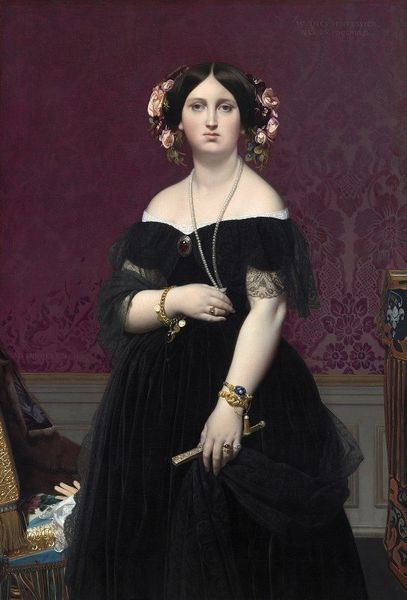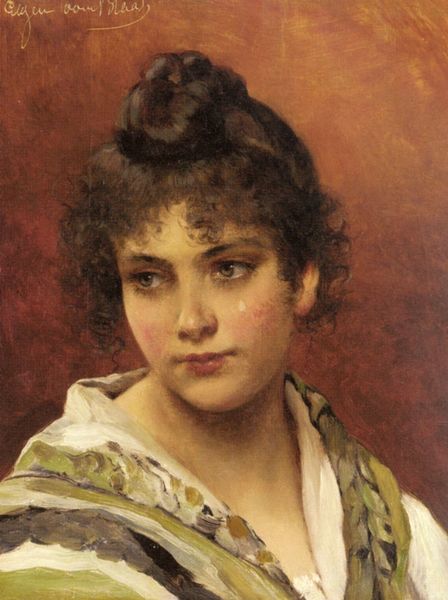
painting, oil-paint
#
portrait
#
painting
#
oil-paint
#
figuration
#
romanticism
#
history-painting
#
academic-art
#
lady
Copyright: Public domain
Curator: Thomas Francis Dicksee, the artist behind this work, presents a figure titled "Amy Robsart" executed with oil paints and demonstrates clear leanings towards Romanticism within the academic tradition. Editor: My first impression is one of quiet contemplation. The sitter’s gaze holds a delicate balance of vulnerability and poise. It’s interesting how such meticulous detailing softens into an overall effect of subdued elegance. Curator: The details certainly speak to the material concerns and economic realities that influenced its creation. Consider the lace collar, the pearls - clearly, the sitter had access to specific goods produced and distributed within a vast trading network. The textures here, replicated with layers of pigment, highlight an artisanal mastery prized by the period's academic structures. Editor: And what about Amy Robsart herself? She’s not just a figure clad in valuable textiles. Her story is rooted in the gender politics of the Tudor era. The tragic circumstances of her death – possibly accidental, possibly murder orchestrated by her husband, Robert Dudley, a favorite of Queen Elizabeth – cast a shadow on her portrayal here, and indeed over our interpretation. Is Dicksee offering a glimpse into a woman trapped within a gilded cage, her fate inextricably linked to the powerful men in her life? Curator: That’s a valid perspective, of course, but let's think practically about the making of it. How the artist chose those particular brushes for specific details. Think about the ratios in which the pigment has been mixed to portray the exact translucence and iridescence of pearls… Editor: But if we strip the painting bare of social context and historical weight, what remains? Can we separate Amy Robsart the object, made up of fabric and pearl, from the story and political tensions she represented? Shouldn't her position as a pawn within those power dynamics be foregrounded as a primary source of the art piece's pathos? Curator: It’s undeniably thought-provoking how these oil paints can perpetuate a narrative steeped in privilege, labor division, and commerce, and then centuries later we analyze those very production processes within a different value structure. Editor: Exactly. Dicksee’s "Amy Robsart," is more than just paint on canvas; it's a portal into the intersection of gender, power, and material culture.
Comments
No comments
Be the first to comment and join the conversation on the ultimate creative platform.
